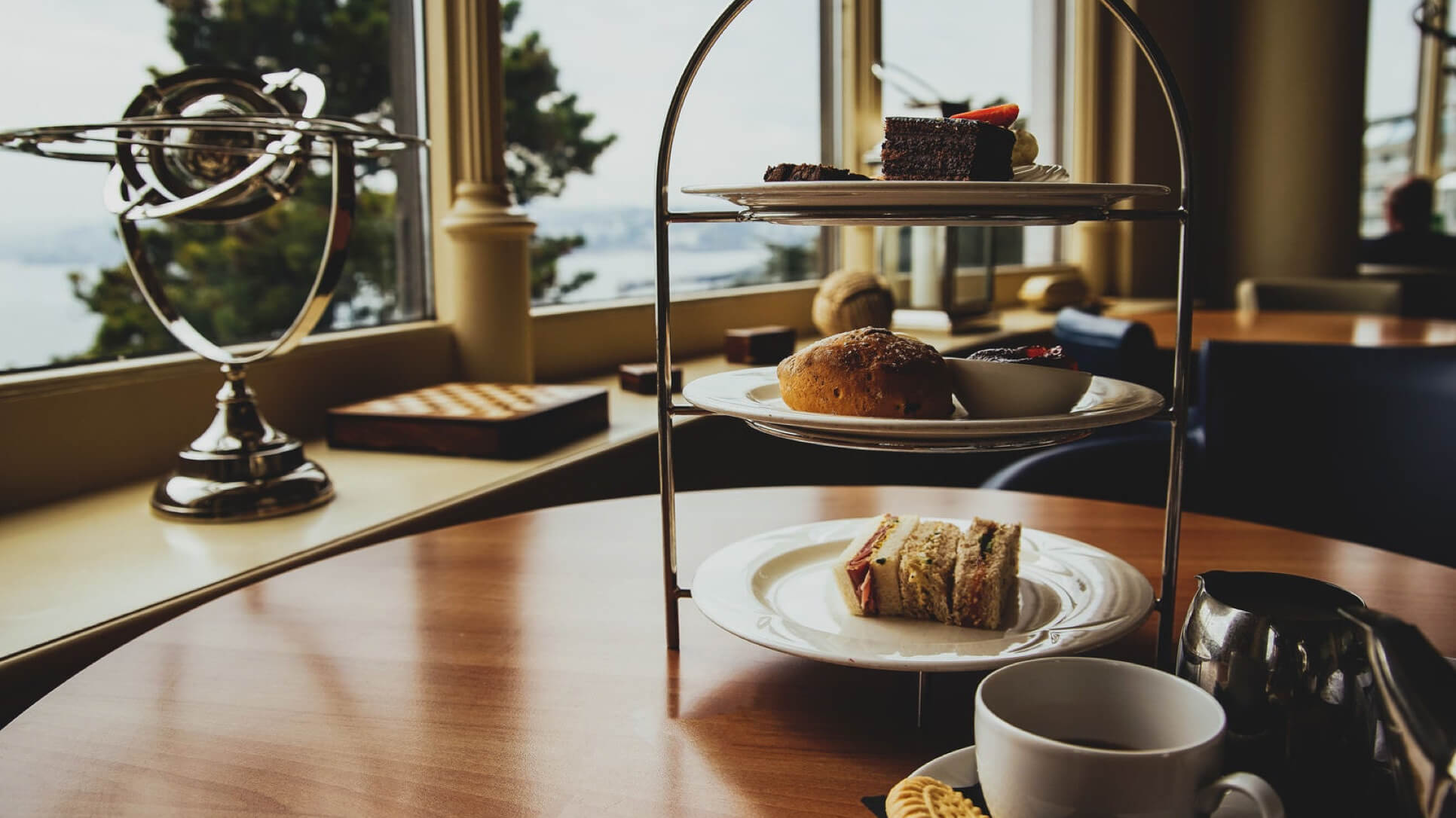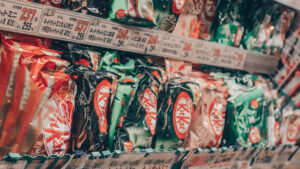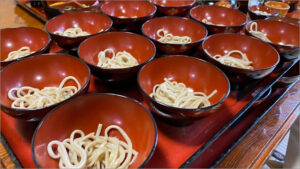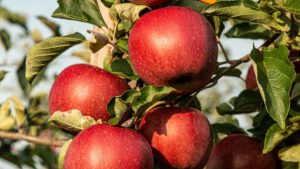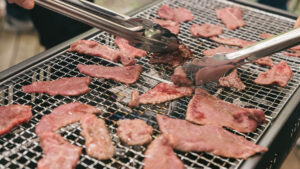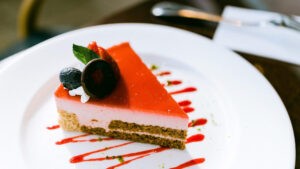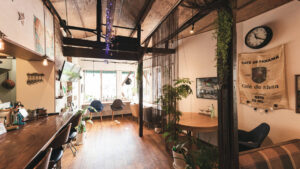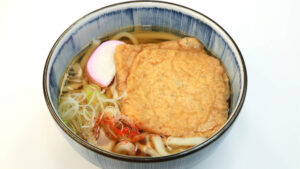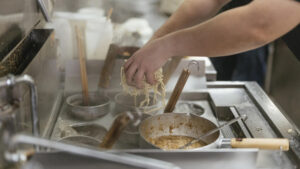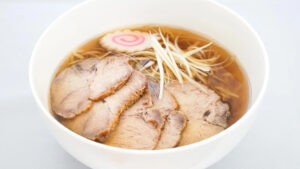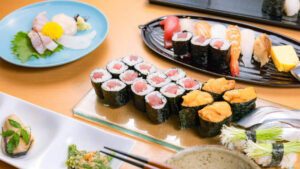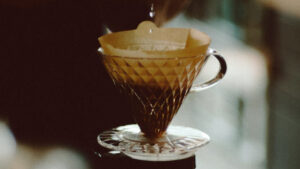Japanese afternoon tea has evolved into a unique style that blends the elegance of British tradition with the beauty of Japan’s four seasons and the spirit of “omotenashi” — heartfelt hospitality. In spring, you can enjoy cherry blossoms and strawberries; in summer, matcha and tropical fruits; in autumn, chestnuts and chocolate; and in winter, special Christmas-themed menus. From luxurious hotel lounges to charming machiya cafés, every venue offers thoughtful presentation and refined details — a true reflection of Japanese culture. This article introduces the charm, popular spots, and etiquette of Japanese afternoon tea, making it easy for first-time visitors to appreciate this elegant experience.
Contents
What Makes Japanese Afternoon Tea Special
Japanese afternoon tea offers a unique experience that blends the elegance of British tea traditions with Japan’s refined sense of aesthetics. Based on the classic style of enjoying tea with sweets and light meals, it incorporates seasonal themes and Japanese ingredients to create a delicate and sophisticated world for both the eyes and the palate. From luxury hotel lounges to traditional Kyoto townhouses and modern Japanese interiors, each venue has its own distinct charm. It is, in every sense, a beautiful embodiment of Japan’s spirit of hospitality — “omotenashi.”
The Harmony of Tradition and Modern Design
Japanese afternoon tea seamlessly combines the country’s long-standing tea culture with contemporary design and culinary trends. For example, gold leaf, washi paper, bamboo stands, and lacquerware trays reflect Japan’s artistic sensibilities. Every detail — from lighting and aroma to the layout of the space — is carefully considered. By preserving tradition while continuing to innovate, Japanese afternoon tea has become a cultural experience in itself, attracting both locals and international visitors with its refined beauty.
The Origins of Afternoon Tea and Its Spread in Japan
The concept of afternoon tea originated in 19th-century British aristocratic society, where enjoying tea and light refreshments became a symbol of elegance and social grace. In Japan, the custom was introduced in the 1980s, initially at luxury hotels, and gradually spread to a wider audience. With the rise of social media, the beautifully arranged tea stands and seasonal themes began to capture attention, especially among young women. Today, Japanese afternoon tea can be enjoyed in cities across the country—from Tokyo to Kyoto—and has even become one of the reasons travelers visit Japan.
The Spirit of Japanese Hospitality
At the heart of Japanese afternoon tea lies the spirit of “omotenashi,” or thoughtful hospitality. Every detail is designed to reflect the changing seasons and to make guests feel truly cared for — from the temperature of the tea to the timing of each serving. The selection of tableware and the artistic presentation of each dish express gratitude and respect for the guest. This delicate attention to detail, reminiscent of traditional kaiseki cuisine, turns afternoon tea into more than just a meal — it becomes a cultural experience rich in meaning and emotion.
Seasonal Themes and Artistic Presentation
One of the most distinctive features of Japanese afternoon tea is its celebration of the four seasons. In spring, cherry blossoms; in summer, matcha and tropical fruits; in autumn, chestnuts and pumpkin; and in winter, strawberries and chocolate — each season brings new colors and flavors to the table. Decorations change accordingly, often incorporating flowers, leaves, or washi paper to engage all the senses. More than just a culinary delight, Japanese afternoon tea allows guests to experience the beauty of Japan’s natural rhythm throughout the year.
Beyond Sweets: The Charm of Japanese-Inspired Savory Menus
Japanese afternoon tea offers not only elegant sweets but also a variety of savory dishes that make the experience feel like a light meal. While rooted in traditional British elements such as scones and sandwiches, Japanese versions creatively incorporate seasonal ingredients and local flavors. Miso, yuzu, and seaweed may appear in delicate bites, while small cups of dashi-based soup add warmth and depth. These dishes are visually stunning and perfectly balance sweet and savory flavors — creating a uniquely Japanese harmony of taste and presentation.
Traditional “Wa” Sweets with Matcha and Japanese Chestnuts
One of the highlights of Japanese afternoon tea is its array of “wagashi”-inspired desserts that celebrate the seasons. From creamy matcha mousse that balances subtle bitterness with sweetness, to chestnut mont blanc and roasted tea (hojicha) cakes, each treat showcases refined craftsmanship and natural flavors. The presentation often includes seasonal flowers and colors, resembling miniature works of art. These sweets embody Japan’s nature and aesthetics, turning tea time into an edible art experience that engages both the eyes and the palate.
Elegant Twists on Sushi and Sandwiches
Even the savory items in Japanese afternoon tea are prepared with meticulous attention to detail. Classic sandwiches are refined with Japanese ingredients — such as shrimp and avocado with wasabi mayonnaise, or egg and spicy cod roe for a flavorful twist. Small portions of sushi, inari rolls, and vegetable-topped canapés frequently appear, adding color and sophistication to the tea stand. Served in bite-sized portions, they’re easy to enjoy and balance perfectly with the sweetness of desserts. Each plate reflects Japan’s sense of delicacy, creativity, and visual beauty.
The Experience Behind Japan’s “Immersive” Afternoon Tea Trend
One reason Japanese afternoon tea has become so popular is that it has evolved beyond simply “tasting” food into a full sensory experience. Every element — flavor, presentation, aroma, tableware, and service — is carefully orchestrated to create a single work of art. For younger generations and international travelers alike, taking photos while enjoying a slow, peaceful moment away from the rush of everyday life has become part of the charm. It’s not just a meal, but a form of edible entertainment that engages all five senses.
Beautiful Presentations Made for Social Media
Japanese afternoon tea is renowned for its breathtaking presentation, which often becomes a highlight on social media. The balance of colors, symmetry of arrangement, and artistic plating make each tiered stand look like a painting. Cherry blossom petals, gold leaf, and glass tableware add elegance and sparkle, ensuring that the display is photogenic from every angle. This attention to visual detail turns each tea set into a moment worth sharing — and remembering.
Unique Ambiance at Each Hotel and Café
Every hotel and café in Japan brings its own character to the afternoon tea experience. Luxury hotels create an atmosphere of sophistication with warm lighting and gentle background music, while traditional-style cafés use the natural scent of wood and soft daylight to create a calm retreat. Even the tableware and overall styling vary from place to place, making “where you enjoy it” part of the experience itself. These thoughtful spatial designs elevate Japanese afternoon tea from a simple meal to a moment of tranquil indulgence.
Seasonal Events and Creative Collaborations
Another appeal of Japanese afternoon tea lies in its ever-changing seasonal and collaborative themes. In spring, menus feature cherry blossoms and strawberries; in summer, mango and matcha; in autumn, chestnuts and Halloween motifs; and in winter, festive Christmas and Valentine’s selections. Many hotels also collaborate with fashion houses, popular anime, or luxury brands to create limited-edition experiences. This constant innovation keeps guests coming back, transforming afternoon tea in Japan into an endlessly fresh and inspiring experience.
Popular Afternoon Tea Spots in Japan
Across Japan, travelers can enjoy a wide range of afternoon tea experiences that reflect each region’s culture and local ingredients. In Tokyo, luxury hotels offer world-class plans that highlight refinement and artistry; in Kyoto, matcha-themed teas evoke a sense of traditional Japanese elegance; and in regional cities, locally inspired sweets showcase each area’s flavors and creativity. The atmosphere and theme vary depending on location, making afternoon tea itself a destination. Below are some of the most popular areas among international visitors and what makes them special.
Luxury Hotel Afternoon Tea in Tokyo
Tokyo is the heart of Japan’s afternoon tea culture. High-end hotels and iconic cafés present glamorous tea sets that change with the seasons and special events, offering guests a luxurious escape from the everyday. Each hotel has its own unique approach to presentation and tea selection, turning every visit into an artful experience. Sipping tea while gazing at the city skyline at dusk creates an unforgettable moment that adds elegance and sophistication to any Tokyo stay.
Graceful Experiences at the Imperial Hotel and Shangri-La Tokyo
No discussion of Tokyo’s afternoon tea would be complete without mentioning two legends: the Imperial Hotel and Shangri-La Tokyo. At the Imperial Hotel, guests are treated to a classic British-style tea stand enhanced with subtle Japanese touches — refined sweets, elegant service, and a timeless atmosphere steeped in history. Meanwhile, Shangri-La Tokyo offers a more contemporary experience with Asian-inspired creativity and panoramic city views from its upper floors. Both are renowned for exceptional service and ambiance, making them ideal for special occasions or simply indulging in elegance.
Seasonal Dessert Plates Inspired by Japan’s Four Seasons
Tokyo’s hotel afternoon teas celebrate Japan’s seasonal beauty through artful dessert plates that evolve throughout the year. In spring, cherry blossoms and strawberries; in summer, mango and matcha; in autumn, chestnuts and grapes; and in winter, chocolate and berries take center stage. The presentation focuses on harmony and refinement — petals, leaves, and touches of gold leaf often adorn the plates, creating scenes reminiscent of Japanese art. Guests can savor not only the flavors but also the visual poetry of Japan’s changing seasons, making each visit a truly immersive cultural experience.
How to Enjoy Afternoon Tea in Japan
Japanese afternoon tea is more than just a culinary experience — it’s a complete moment that combines flavor, atmosphere, and hospitality. Knowing a few simple tips about preparation and etiquette can make your visit even more enjoyable. At popular hotels and cafés, a little attention to timing, attire, and communication goes a long way toward ensuring a relaxed and satisfying experience. This guide explains everything from how to make a reservation to what to expect on the day, so even first-time visitors can enjoy Japan’s refined take on afternoon tea with confidence.
From Reservation to the Day of Your Visit
At most high-end hotels and well-known cafés, advance reservations are essential. Many venues offer online booking through official or English-friendly websites. On the day of your visit, staff will guide you to your seat and explain the tea selection and menu details with care. Service is typically unhurried, allowing you to sip tea and enjoy conversation at a relaxed pace. A standard afternoon tea experience lasts about two hours — enough time to unwind and savor every moment of this luxurious ritual.
Book Early — Popular Spots Fill Up Fast
Securing a reservation for Japanese afternoon tea can be surprisingly competitive. Especially on weekends or during seasonal events, seats at famous hotels and trendy cafés can sell out within days of release. To avoid disappointment, it’s best to book about a month in advance. Most online booking pages display menu details and prices, making it easy to choose an option that fits your taste and budget. Early reservations are the key to a seamless, stress-free afternoon tea experience in Japan.
Check the Dress Code and Mind Your Manners
While Japan’s afternoon tea culture is welcoming, it also values elegance. Smart casual attire is generally recommended, particularly in hotel settings where jeans or sneakers may feel too informal. When booking, check whether a dress code is mentioned. During your visit, keep conversation quiet, avoid strong perfumes, and be considerate of others enjoying a peaceful atmosphere. Respecting these subtle points of etiquette reflects an understanding of Japan’s “omotenashi” — the spirit of thoughtful hospitality — and ensures a pleasant experience for everyone.
Inform Staff About Allergies or Food Preferences
Because Japanese afternoon tea menus are carefully curated, it’s wise to mention any allergies or dietary restrictions in advance. Simply note your needs in the reservation form or say, “I have a food allergy to nuts,” when calling or checking in. Most hotels can accommodate vegetarian, vegan, or allergy-friendly requests, and will appreciate your proactive communication. Sharing these details beforehand allows the staff to tailor the experience to you, ensuring a worry-free and personalized afternoon tea that fits your preferences perfectly.
Photography Etiquette and Tips for Capturing the Perfect Afternoon Tea
The visual beauty of Japanese afternoon tea is one of its greatest charms, and many guests love to capture it as a memory. However, it’s important to take photos respectfully, keeping in mind the atmosphere and other guests. Avoid using flash and take photos quietly to maintain the peaceful environment. With a bit of attention to lighting and composition, you can capture stunning, elegant shots without disturbing anyone. Here are some essential tips and etiquette to help you photograph Japanese afternoon tea gracefully.
Be Respectful and Keep Your Photography Discreet
In Japan, there is a strong cultural emphasis on respecting others in shared spaces, including restaurants and hotels. During afternoon tea — a serene and refined experience — minimizing shutter sounds and avoiding flash are key points of good manners. Try to frame your shots in a way that keeps other guests out of view. This mindfulness toward privacy and atmosphere reflects an understanding of Japan’s “omotenashi” hospitality. Quiet, considerate photography allows everyone — including you — to enjoy the moment comfortably.
Use Natural Light for Softer, More Elegant Photos
Natural light brings out the delicate textures and colors of sweets and tea far better than artificial lighting. Choose a table near a window and shoot in the morning or early afternoon when sunlight is gentle and flattering. If the light is too strong, you can soften it by creating a small shadow using a notebook or napkin. Avoid using direct lighting or your phone’s flashlight, as it can wash out the subtle tones. By embracing natural light, you’ll capture the elegance and transparency that define Japanese afternoon tea.
Framing the Tea Set for the Best Composition
To photograph the full beauty of an afternoon tea set, pay attention to balance and perspective. A flat lay — shooting directly from above — works well to showcase the arrangement and color harmony of the tiers. Alternatively, a slight diagonal angle adds depth, highlighting the layers of sweets and the gentle steam from the tea. Including background elements such as tablecloth textures or teacup patterns enhances the atmosphere. A thoughtfully composed shot not only looks refined but also helps you remember the calm and grace of that moment every time you see it.
The Art of Savoring: Order and Tips for the Perfect Afternoon Tea
Japanese afternoon tea is not only about visual beauty but also about balance and flow of flavor. Each tier of the tea stand — from the top to the bottom — is carefully designed with intention. Elegant sweets, light savory dishes, and fragrant teas are arranged to create a harmonious “course meal” experience. By following the right order, you can appreciate the nuanced progression of taste and aroma that defines Japan’s refined sense of flavor. This mindful way of savoring transforms afternoon tea into a truly sensory journey.
Enjoy from the Top Tier to the Bottom
The traditional three-tier stand is best enjoyed in order from top to bottom. The top tier usually features sweets, the middle holds scones, and the bottom presents savory bites such as sandwiches or canapés. Rather than starting with sweets, begin with something savory to awaken your palate, move on to the warm scones, and finish with desserts to experience a natural transition of flavors. Japanese afternoon teas are intentionally designed this way, with each dish enhancing the next. By following this flow, you’ll deepen your appreciation for the thoughtfulness behind every bite.
Balancing the Aroma of Tea with the Sweetness of Desserts
The true joy of afternoon tea lies in the perfect harmony between tea and dessert. In Japan, many hotels and cafés carefully pair teas with sweets to complement their aroma and intensity. For example, rich flavors like matcha and chocolate pair beautifully with Assam or Darjeeling, while fruit-based desserts shine alongside Earl Grey or herbal infusions. Taking the time to notice how the fragrance of the tea interacts with the sweetness of the pastry elevates the experience — a practice that reflects the mindfulness central to Japanese dining culture.
End with Your Favorite Cup of Tea
To conclude your afternoon tea, choose a tea that suits your personal taste. A light, refreshing tea or a soothing herbal blend can cleanse the palate and leave a pleasant aftertaste. Many Japanese hotels offer a pot service for the final cup, allowing guests to linger and relax at their own pace. Ending with your favorite tea not only completes the sensory balance but also creates a lasting memory of calm and satisfaction — the perfect finale to an elegant tea experience.
Seasonal Afternoon Tea — A Celebration of Japan’s Four Seasons
One of the most captivating aspects of Japanese afternoon tea is its seasonal themes. Each season — spring, summer, autumn, and winter — brings unique ingredients, colors, and decorations, offering a fresh experience every time you visit. Spring features cherry blossoms and strawberries, summer highlights mango and matcha, autumn showcases chestnuts and sweet potatoes, and winter indulges in chocolate and berries. Through these changing menus, guests can savor not only delicious flavors but also Japan’s deep appreciation for the beauty of the seasons — a cultural expression found nowhere else in the world.
Spring: Cherry Blossom and Strawberry Afternoon Tea
Spring is the most glamorous and popular season for afternoon tea in Japan. Themed around cherry blossoms and strawberries, the tea tables bloom with shades of pink. Delicate desserts such as cherry blossom mousse, jelly, and strawberry shortcake embody both flavor and artistry. Many hotels and cafés decorate their spaces with real cherry branches or floral arrangements, allowing guests to feel the arrival of spring through sight, scent, and taste. It’s a moment that captures Japan’s poetic sense of renewal and beauty.
Cherry Blossom Sweets and Pink Plate Presentations
Cherry blossom–themed sweets are the hallmark of Japan’s springtime afternoon tea. Popular creations include cakes infused with salted sakura petals, macarons filled with cherry cream, and translucent jellies shaped like flower petals. The combination of gentle sweetness and subtle saltiness evokes the fresh air of spring. Pink plates and glass tableware complete the scene, giving the impression of dining beneath blooming sakura trees. In Japan, cherry blossoms symbolize new beginnings — an idea beautifully reflected in every delicate dessert of this seasonal tea.
Hotel Lounge Sakura Fair
During spring, luxury hotels across Japan host special “Sakura Afternoon Tea” or “Cherry Blossom Fair” events. At renowned venues such as the Imperial Hotel, Palace Hotel Tokyo, and The Ritz-Carlton, limited-time menus celebrate the season with refined pink-themed treats. Guests can enjoy their tea while gazing at cherry blossoms through the windows, creating an unforgettable harmony of taste and scenery. Drinks are often adorned with floating petals or infused with strawberry essence, ensuring every detail evokes the spirit of spring. For visitors from abroad, this is one of the most elegant ways to experience Japan’s seasonal beauty.
Summer: Mango, Matcha, and Tropical Tea
Summer afternoon tea in Japan is known for its refreshing appearance and energizing flavors. Tropical fruits like mango and pineapple take center stage, while Japanese elements such as roasted matcha add a sophisticated twist. These vibrant treats are often paired with chilled iced teas or sparkling tea cocktails, helping guests escape the heat. Bright yellows and greens dominate the plates, evoking the image of a summer garden brought to the table. This is a tea experience that engages all five senses — a vivid, breezy celebration of the season’s vitality.
Cool Sweets and Iced Tea Pairings
Cold desserts and iced teas are the perfect pairing for Japan’s summer afternoon teas. Menus often feature fruit jellies, mango puddings, and matcha parfaits that are light and translucent, both in texture and appearance. Chilled fruit teas and citrus-infused iced blends enhance the sense of refreshment, while the shimmer of ice in glassware creates a sparkling visual effect. The combination of flavor and presentation allows guests to enjoy coolness not only through taste but also through sight — a uniquely Japanese way to savor summer.
Refreshing Green-Themed Decorations
Many Japanese summer afternoon teas embrace “green” as their main motif, inspired by nature and calmness. Bamboo accents, leafy decorations, green glass plates, and mint garnishes bring a touch of freshness to the table. Matcha cakes, roll cakes, and lemongrass teas balance aroma and color beautifully. Even in the middle of a busy city, these green-themed presentations evoke the tranquility of a cool retreat in the countryside. It’s an elegant escape that captures the essence of Japanese summer aesthetics.
Limited-Time Summer Afternoon Tea Buffets
During summer, many hotels host special “Afternoon Tea Buffets,” allowing guests to indulge freely in colorful tropical sweets and ice desserts. This interactive style is especially popular with families and friends. Live dessert stations, such as made-to-order parfaits or freshly poured teas, create a dynamic sensory experience. For international travelers, these limited-time events offer not just seasonal flavors but also visually stunning moments worth photographing — a perfect blend of culinary art and summer celebration in Japan.
Autumn: Chestnut and Chocolate Afternoon Tea
Japanese autumn afternoon tea is known for its deep, comforting flavors and warm, earthy tones. Seasonal ingredients such as chestnuts, chocolate, and pumpkin are transformed into elegant treats that balance sweetness with a touch of roasted or bittersweet depth. The use of golden accents and autumn-colored plates enhances the cozy, refined atmosphere. Inspired by the beauty of fall foliage, many venues feature warm lighting and candlelit settings that create a tranquil, heartwarming tea experience — perfect for savoring the gentle rhythm of the season.
Japanese Chestnut Mont Blanc and Tea Pairings
The highlight of autumn afternoon tea in Japan is the waguri (Japanese chestnut) Mont Blanc. Unlike its European counterpart, the Japanese version emphasizes the natural flavor of chestnuts with a subtle sweetness and smooth, velvety texture. Beneath the creamy surface lies a delicate nuttiness that pairs beautifully with aromatic teas like Assam or Darjeeling. Some menus even pair the dessert with Japanese green tea, creating a delightful harmony between East and West. Beyond taste, the elegant presentation — often shaped like chestnuts or autumn leaves — turns this dessert into a work of edible art.
Winter: Christmas and Candlelight Afternoon Tea
Winter is the most magical and festive season for afternoon tea in Japan. Tea stands adorned with Christmas trees, snowflakes, and glittering ornaments evoke scenes from a fairytale. Rich desserts featuring chocolate and berries are complemented by spiced teas such as cinnamon or mulled wine blends, adding warmth to the cold season. Surrounded by soft lighting and a gentle sweetness in the air, guests can enjoy a cozy and enchanting experience — one that leaves lasting memories of winter in Japan.
Christmas-Themed Tea Stands
Throughout December, hotels and cafés across Japan host special “Christmas Afternoon Tea” events. Each tier of the stand bursts with festive charm — Santa-shaped cookies, star-topped cakes, and chocolate ornaments bring a sense of excitement and joy. Red and gold hues dominate the presentation, creating a visual feast reminiscent of opening a beautifully wrapped gift. In addition to savoring the flavors, guests delight in taking photos of the sparkling displays. For travelers, it’s a cherished opportunity to experience Christmas in a distinctly Japanese, elegant style.
Candlelit Winter Evenings
For an even more atmospheric experience, some hotels and lounges offer candlelight afternoon tea during winter evenings. The gentle flicker of candles and lanterns casts a soft glow across the table, creating an intimate and serene mood. Indulgent desserts like chocolate mousse and berry cakes are paired with warm teas, providing both comfort and depth of flavor. In the stillness of winter nights, this combination of warmth, sweetness, and quiet ambiance embodies the essence of Japanese hospitality — a moment of peace and luxury to end the day.
Why Japanese Afternoon Tea Captivates the World
Japanese afternoon tea is more than a moment to enjoy tea and sweets — it is an immersive cultural experience that celebrates the harmony of “season, space, and sensation.” From the artful presentation that reflects Japan’s four seasons to the delicate flavors of wagashi-inspired desserts and the serene atmosphere of refined hospitality, every element embodies Japanese aesthetics and mindfulness. Visiting one during your travels feels like stepping into a small art gallery of taste and design. On your next trip to Japan, let yourself be surrounded by the scents of cherry blossoms, matcha, chestnuts, and Christmas delights. You’ll discover that Japanese afternoon tea is not just elegant — it’s an unforgettable journey through beauty, culture, and emotion.
